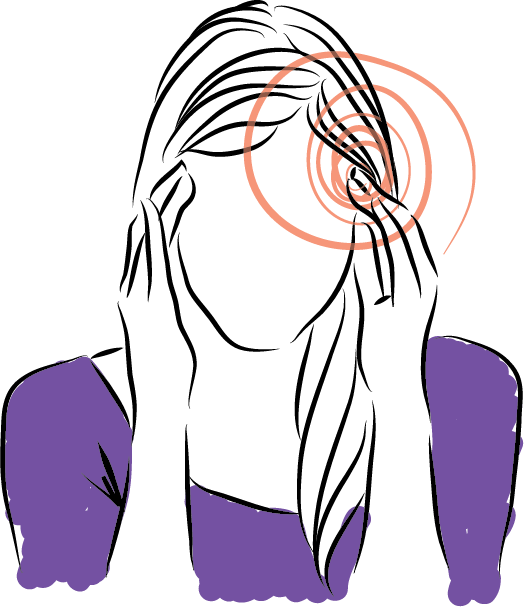HEADACHES & MIGRAINES
Dr. Amy M. O’Donnell offers evidence-based treatment for chronic headaches & migraines
A chiropractic approach may be necessary when it comes to the long term relief of consistent headaches and migraines
According to the National Headache Foundation, over 45 million Americans suffer from chronic, recurring headaches and of these, 28 million suffer from migraines. About 20% of children and adolescents also experience significant headaches. Headaches can come in many varieties. The most common types of headaches are:
WHAT TYPES OF HEADACHES ARE THERE?
TENSION HEADACHES
Also called chronic daily headaches or chronic non-progressive headaches, tension headaches are the most common type of headaches among adults and adolescents. These muscle contraction headaches cause mild to moderate pain and come and go over a prolonged period of time.
MIGRAINES
The exact causes of migraines are unknown. A popular theory is that various triggers cause abnormal brain activity, which in turn causes changes in the blood vessels in the brain. Genetics plays a role and migraines can range from moderate to severe, often described as pounding, throbbing pain and can last from four hours to days. This type of headache is associated with symptoms such as sensitivity to light, noise or odors; nausea or vomiting, loss of appetite; and stomach upset or abdominal pain.
MIXED HEADACHE SYNDROME
Also called transformed migraines, mixed headache syndrome is a combination of migraine and tension headaches. Both adults and children experience this type of headache.
CLUSTER HEADACHES
The least common – although the most severe – type of primary headache, the pain of a cluster headache is intense and may be described as having a burning or piercing quality that is throbbing or constant. The pain is so severe that most cluster headache sufferers cannot sit still and will often pace during an attack. The pain is located behind one eye or in the eye region, without changing sides. The term “cluster headache” refers to headaches that have a characteristic grouping of attacks. Cluster headaches occur one to three times per day during a cluster period, which may last two weeks to three months. The headaches may disappear completely for months or years, only to recur.
SINUS HEADACHES
Sinus headaches are associated with a deep and constant pain in the cheekbones, forehead or bridge of the nose. The pain usually intensifies with sudden head movement or straining and usually occurs with other symptoms, such as nasal discharge, feeling of fullness in the ears, fever and facial swelling.
HOW ARE THEY TREATED?
Regardless of the type of headache you may have, the conservative chiropractic approach may be very effective in treating your headaches and at least, managing the pain.
Ice or heat may be helpful depending on which type of headache you have. Migraines usually respond to ice whereas tension and sinus headaches do well with moist heat. Cluster headaches may respond to ice, heat or both. The key is to use heat for no longer than 20 minutes.
MLS laser is effective with pain control, and electrical muscle stimulation aids to relieve muscle spasm. Some headaches are the result of poor posture and forward neck posture which can be helped with Kinesio taping for posture and therapeutic exercises.
Graston Technique breaks down adhesions in tight muscles and fascia of the neck which can contribute to headaches.
Trigger Point Dry Needling is effective in treating trigger points that may be an underlying cause of headaches.
Studies show that chiropractic manipulative therapy is effective with many types of headaches.

